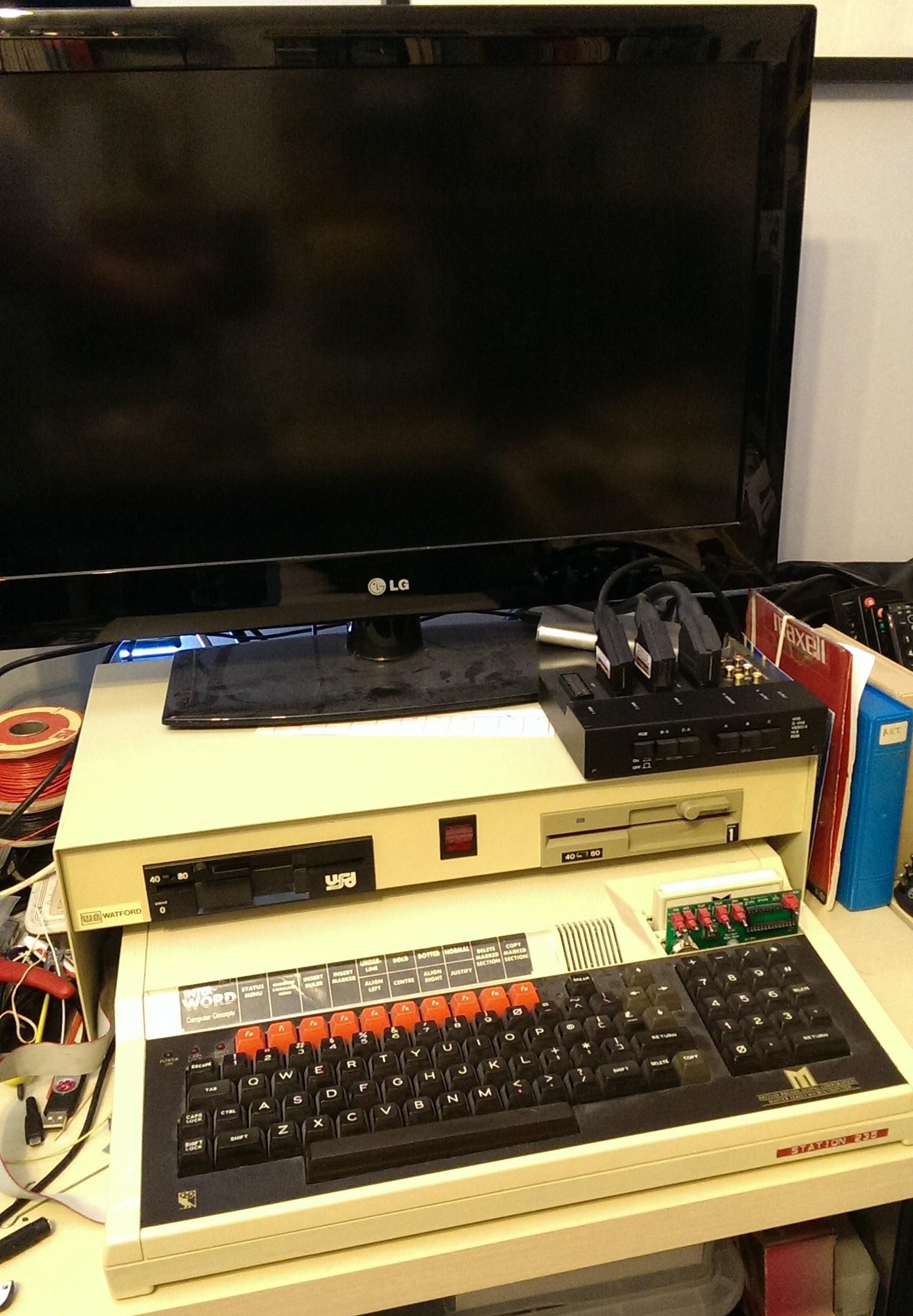| ARCHIVING HARDWARE
The bulk of the archiving of the educational software is done on a Master 128 microcomputer attached to dual 40/80 track 5¼ inch floppy drives. The master has fitted internally a Raspberry Pi co-processor module manufactured by Retroclinic, an Econet Interface and a Retroclinic Datacentre with a dual Compact Flash card hard drive emulator, partitioned into four 500Mb drives. Cartridges are fitted to the cartridge slots, one containing ANFS and Exmon 2 and the other an IFEL switchable Sideways RAM module which gives a choice of 4 different ROM sets, the default being Advanced Disk Toolkit 2 (ADT2) and the BASIC Editor. Floppy discs are analysed using Advanced Disk Investigator 2 (ADI2), which is loaded into sideways RAM.
This Master computer has an Epson RX80 printer attached for dumping disassembled machine code and listing BASIC programs. It is connected to the Econet and is station 235 (the network printer server). Titles which are on 3½ inch disks are archived on a secondary Master 128, which has dual 3½ inch/5¼ inch floppy drives. These drives are connected to the Master via a disc drive doubler connector, which allows two single drives to be connected to behave like a dual drive. This master is also connected to the Econet and is station 100. Internally this has a genuine 65C02 second processor unit, a Retroclinic Datacentre and single Compact Flash card partitioned into two 500Mb drives. Partition 0 is part formatted to host a Level 3 Econet file system and station 100 can act as a Level 3 file server on the Econet. (The main file server is an Archimedes A3020 with a 500Mb SD card hard drive emulator running Acorn Level 4 software.) Both Masters are fitted with dual OS3.20/OS3.50 switchable ROMs also by Retroclinic. In addition BBC model B microcomputers with either 8271 or 1770 DFS interfaces fitted for those titles which will only work on a BBC model B or on a model B with a 8271 DFS are used as necessary. One of the BBC model Bs has an Econet interface and is station 33. An external Datacentre can be fitted to any of these model Bs. ADFS packages are archived from 3½ inch disks using OmniFlop on a Windows PC running Windows XP. 5¼ inch titles are transferred to 3½ inch disks beforehand using the secondary Master computer. It is important to check that these .ADL archives work correctly since OmniFlop sometimes produces an archive in which all the files are corrupted. A fall back process involves creating a blank ADFS image in BeebEm and using ADT to transfer files from .SSD images made on a Master with a Datacentre to the .ADL image in BeebEm. Manuals, etc. are scanned at 300 dpi on a Canoscan LIDE 200 USB scanner attached to a laptop running Windows Vista. Scans are loaded into MS Word to re-compile the manuals and then converted to pdf format for the web site. Sometimes manuals are scanned direct to jpeg files and stored for later conversion to pdfs. This is a faster method of archiving the documents and is used when the archiving is done off-site. The Archive also holds a number of peripheral devices which can be used to enable software which requires them to be tested. These devices include concept keyboards, mice, trackerballs, plotters, joysticks, barcode readers, light pens and EPROM programmers.
|
|
© 2018 - 2025 flaxcottage.com |
